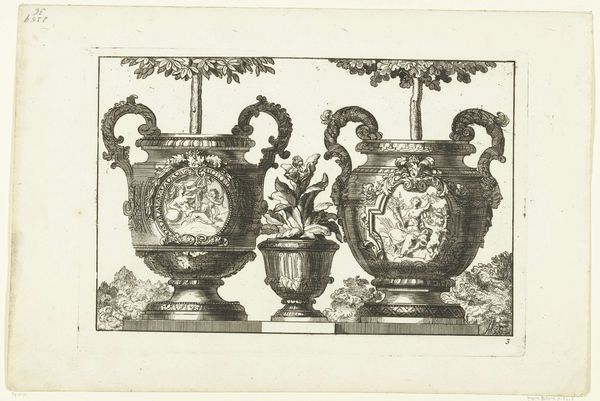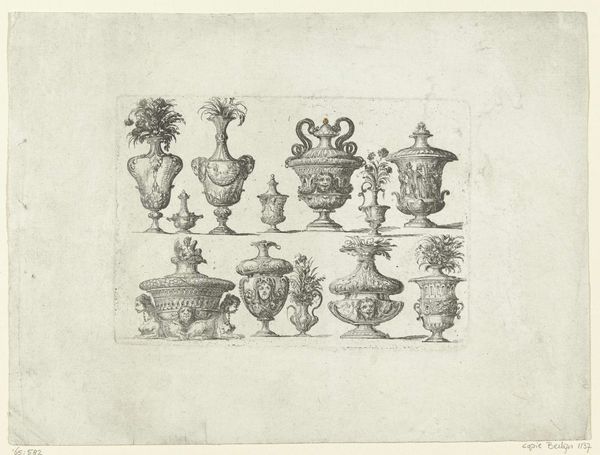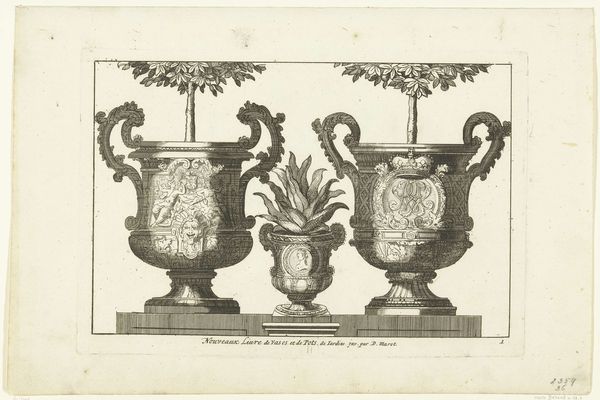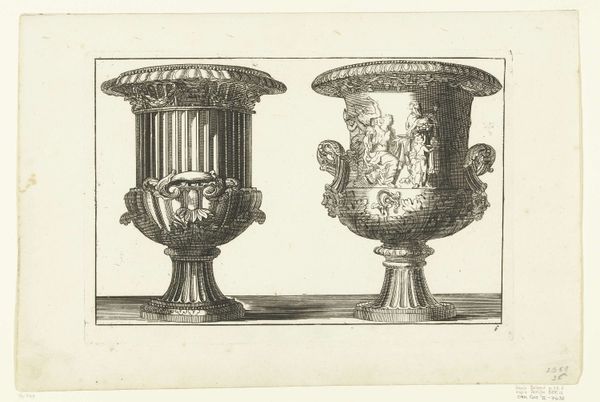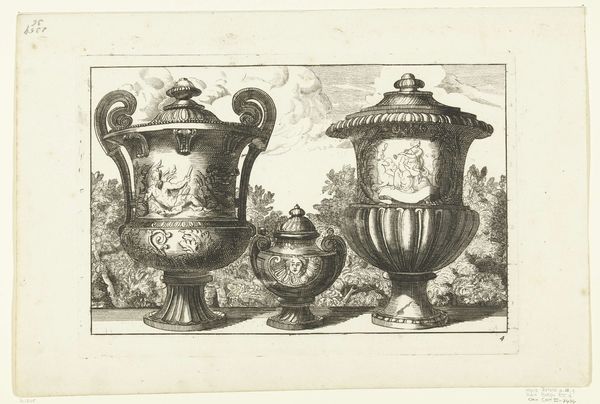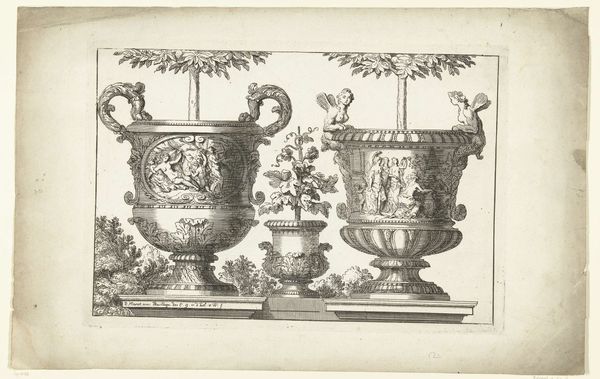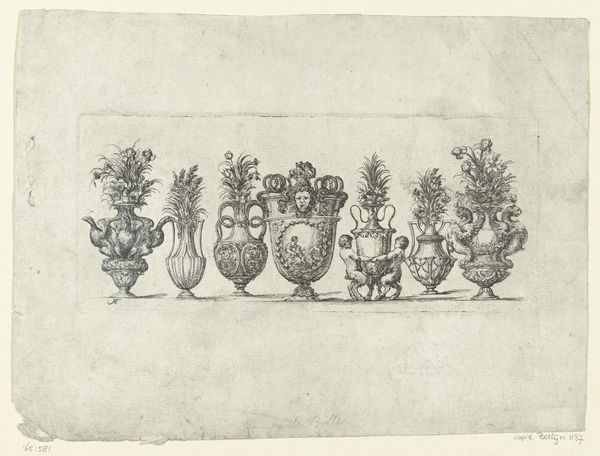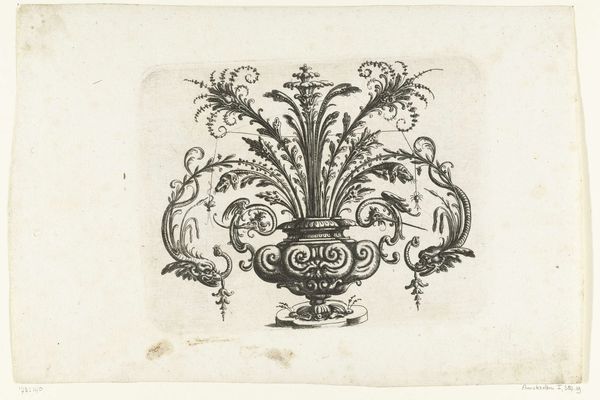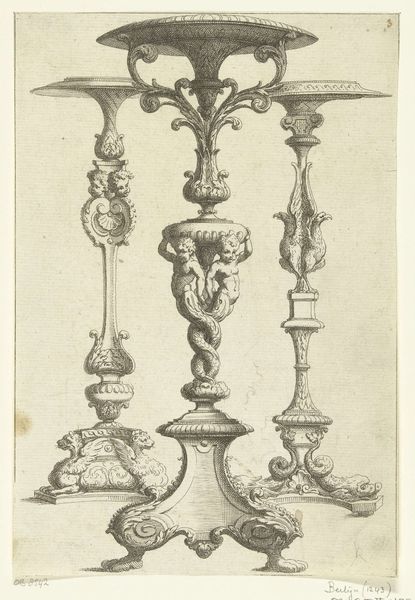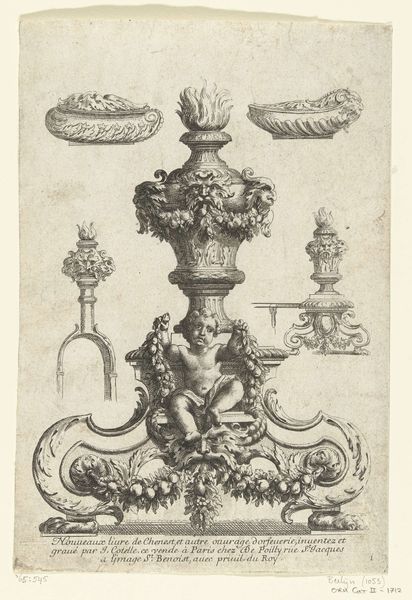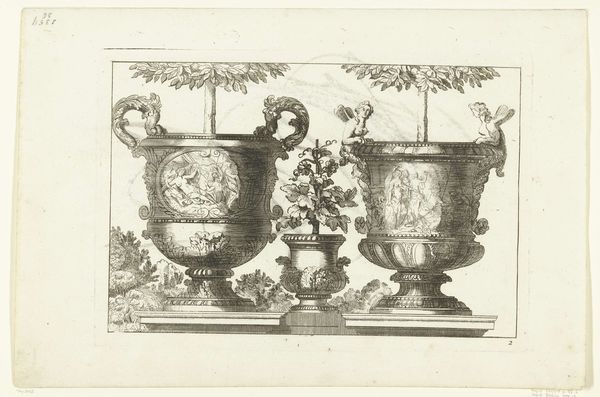
engraving
#
baroque
#
pen sketch
#
pencil sketch
#
old engraving style
#
form
#
pen-ink sketch
#
line
#
sketchbook drawing
#
decorative-art
#
sketchbook art
#
engraving
Dimensions: height 101 mm, width 127 mm
Copyright: Rijks Museum: Open Domain
Curator: Let’s turn our attention to this etching: Mauro Antonio Tesi’s "Drie vazen," placing us somewhere between 1740 and 1766. The title translates to 'Three Vases', and you can find it here at the Rijksmuseum. It’s rendered in a beautiful, precise engraving style. Editor: The sheer ornate-ness of it strikes me first. Those aren't just vases; they are veritable sculptures, almost exploding with details. Are we talking pottery or architecture here? I am not even sure I'd put flowers in there. Curator: Precisely! Think of them more as fantasies realized through the skilled labor of metalworkers. Notice how the engraving meticulously captures texture. This artwork prompts questions about craft versus art, and about who actually made these imagined marvels! It also makes you consider if all the details enhance them, or weigh them down? Editor: That’s a superb point. All of those filigree and minuscule figures etched so carefully… One almost forgets the labor that has made this 'pen sketch' come to life. Looking closely, I see small discrepancies – maybe the artist even let his own hand show. Imperfection amid the ideal, a signature. Curator: Indeed, that tension sings to me – the balance between cold decorative forms and raw execution. It speaks of dreaming of sublime forms but finding oneself tethered to real labor, earthly means and the passage of time. I sense it’s about accepting limitation itself. Editor: So well observed. Knowing more about 18th-century trade practices, I feel I am now really perceiving the social dimensions in these ornamental flourishes. Curator: Me too, that changes everything.
Comments
No comments
Be the first to comment and join the conversation on the ultimate creative platform.
